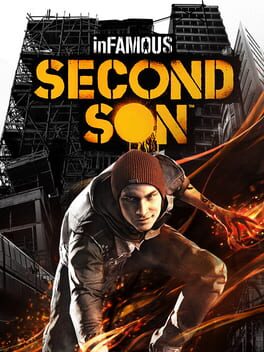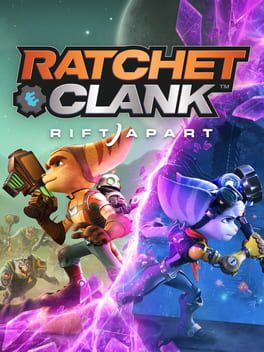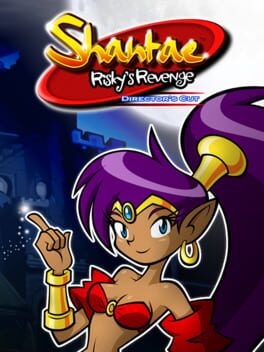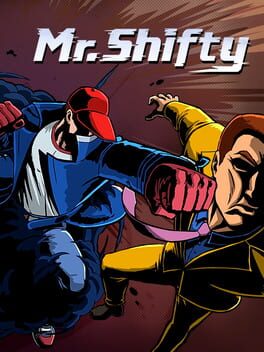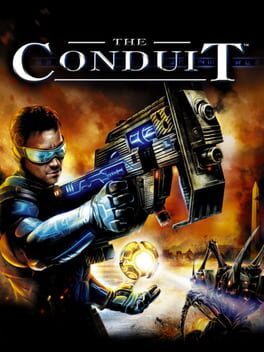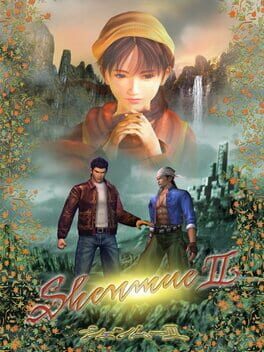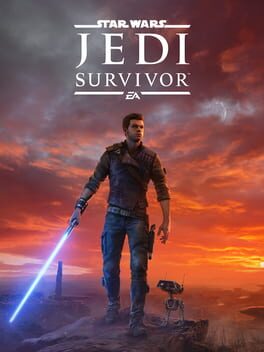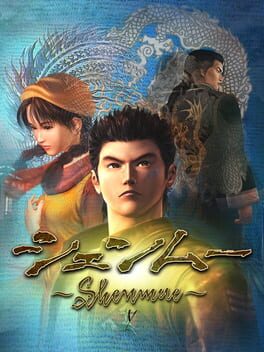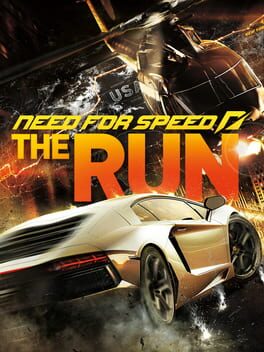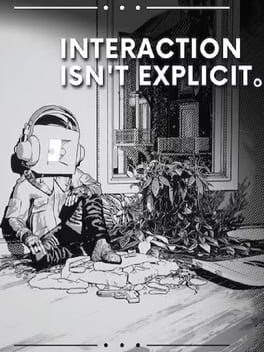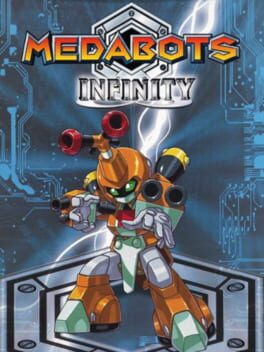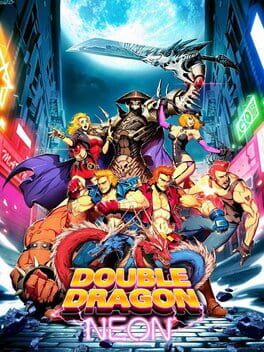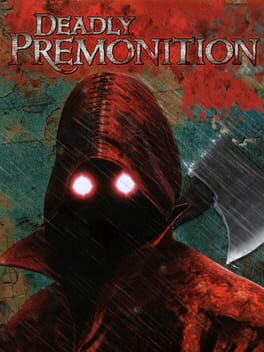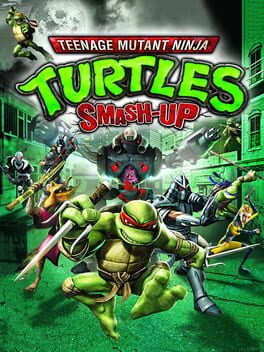BombsOverBaghdad
2014
An unfortunate theme of the Ratchet & Clank franchise is that of wasted potential. Across the PS2 and PS3 Insomniac pumped out 10 R&C titles in just 11 years, an insane workload (even more insane when you realize they were working on the Resistance series concurrently) that meant the studio just never had the time to implement and refine the many ideas it had for the series over the years. Fortunately, Insomniac put in the work to finally curb its culture of crunch and it has paid dividends with Rift Apart, a game which shows that even after 20 years there’s still a spark of creativity in this series, even if it never erupts into a full-on blaze.
To start with the obvious, Rift Apart is an unbelievably gorgeous game with some of the strongest art direction in the series and a smooth framerate. This smoothness extends to the gameplay, featuring the best combat in series history. Very early into the game a dash ability is added to your moveset and this is a great addition that is a boon to both traversal and combat. Enemies are faster and more aggressive than ever and you’ll need to make liberal use of the dash if you want to survive. The old way of circle-strafing, side-jumping, and backpedaling isn’t enough to make it through each enemy encounter anymore, and the addition of the dash makes combat flow much better. The combat is also where the DualSense gets to shine, with most of the game’s weapons making use of the variable triggers, with a half or full press of the triggers doing different things. A half-press of the trigger on your shotgun will fire one barrel while a full-press will fire both, for example. It feels really good and makes me appreciate the DualSense a lot more than I initially did. A Rift Apart is just a really smooth experience overall, the excellent technical performance and lack of loading screens means there’s no significant breaks in the game’s flow, and Insomniac has also made sure you’re never too far from the next firefight or setpiece.
The biggest disappointment here has to do with the dimension hopping, the game’s central gimmick. It most commonly comes into play with these small dimensional rifts which you grapple onto to either gain positional advantage in combat or traverse areas outside of it, but all this really amounts to is a more visually impressive version of the Swingshot, a series staple gadget. There’s also these optional pocket dimensions, which are just small platforming challenges that have very little interesting going. Outside of two planets and few setpieces, Rift Apart doesn’t really do all that much with its central gimmick, and it’s a shame. Another disappointment is just how linear this game is. Previous R&C games had planets with multiple different pathways to explore and find secrets and optional objectives. Here though, with the exception of two planets, each planet as a very obvious main path with a few rooms or hallways off to the side. One planet is so small it makes me wonder why they even bothered with it in the first place.
As for the story, Rift Apart is serviceable. It’s nice to see both Ratchet and Clank have some semblance of a personality again after their 2016 outing, though they’re outshone by their alternate universe counterparts Rivet and Kit, who are both great additions to the cast and it would be an absolute bummer if they didn’t show up in the next game.
Rift Apart has easily and quickly become one of my favorite Ratchet & Clank games of all time, meaning it’s now one of my favorite first-party PlayStation games ever, but even now, with Insomniac working with more powerful hardware than ever before and more dev time than ever before, it’s still haunted by the specter of wasted potential, and that’s just a real shame.
To start with the obvious, Rift Apart is an unbelievably gorgeous game with some of the strongest art direction in the series and a smooth framerate. This smoothness extends to the gameplay, featuring the best combat in series history. Very early into the game a dash ability is added to your moveset and this is a great addition that is a boon to both traversal and combat. Enemies are faster and more aggressive than ever and you’ll need to make liberal use of the dash if you want to survive. The old way of circle-strafing, side-jumping, and backpedaling isn’t enough to make it through each enemy encounter anymore, and the addition of the dash makes combat flow much better. The combat is also where the DualSense gets to shine, with most of the game’s weapons making use of the variable triggers, with a half or full press of the triggers doing different things. A half-press of the trigger on your shotgun will fire one barrel while a full-press will fire both, for example. It feels really good and makes me appreciate the DualSense a lot more than I initially did. A Rift Apart is just a really smooth experience overall, the excellent technical performance and lack of loading screens means there’s no significant breaks in the game’s flow, and Insomniac has also made sure you’re never too far from the next firefight or setpiece.
The biggest disappointment here has to do with the dimension hopping, the game’s central gimmick. It most commonly comes into play with these small dimensional rifts which you grapple onto to either gain positional advantage in combat or traverse areas outside of it, but all this really amounts to is a more visually impressive version of the Swingshot, a series staple gadget. There’s also these optional pocket dimensions, which are just small platforming challenges that have very little interesting going. Outside of two planets and few setpieces, Rift Apart doesn’t really do all that much with its central gimmick, and it’s a shame. Another disappointment is just how linear this game is. Previous R&C games had planets with multiple different pathways to explore and find secrets and optional objectives. Here though, with the exception of two planets, each planet as a very obvious main path with a few rooms or hallways off to the side. One planet is so small it makes me wonder why they even bothered with it in the first place.
As for the story, Rift Apart is serviceable. It’s nice to see both Ratchet and Clank have some semblance of a personality again after their 2016 outing, though they’re outshone by their alternate universe counterparts Rivet and Kit, who are both great additions to the cast and it would be an absolute bummer if they didn’t show up in the next game.
Rift Apart has easily and quickly become one of my favorite Ratchet & Clank games of all time, meaning it’s now one of my favorite first-party PlayStation games ever, but even now, with Insomniac working with more powerful hardware than ever before and more dev time than ever before, it’s still haunted by the specter of wasted potential, and that’s just a real shame.
2017
2009
The Conduit is a thoroughly mediocre game that got increased attention purely because of the console it was on. Quality 3rd party support for the Wii was notoriously shaky, so the sight of an original FPS for the Wii that wasn’t total shovelware or a stripped down port caused the gaming press to give it undue attention, with some even calling it the best Wii game of E3 2008, though given the nature of that year’s show it might as well have been running unopposed. The Conduit would’ve been entirely ignored had it come out on any other platform, and it honestly deserved to be. It’s like a console version of one of those Gameloft mobile shooters. It plays like dollar store Halo.
2001
I can see what one could appreciate about Shenmue, and far be it from me to say niche experiences like this shouldn’t exist, but this is one of the most excruciatingly mind-numbing experiences I’ve ever had with any game. Sorry to all the Dreamcast fans out there, it’s an extremely cool console, but is it any surprise it failed when games like this were its big exclusives?
When I first played Star Wars Jedi: Fallen Order, I came away from it thinking it was highly flawed but had a good foundation to build on. Now having played Jedi: Survivor, not only has Respawn built on that foundation, they’ve done it to such a degree that the prospect of replaying Fallen Order becomes a less and less appealing prospect.
Combat retains its Soulsbornekiro style from Fallen Order, but with a few tweaks; three new lightsaber stances — dual wield, saber & blaster, and Crossguard — have been added. While the now 5 styles available still kind of boil down to ‘quicker styles for groups, heavier styles for bosses and large enemies’ they still each have their own moves and add variety to battles. Combined with all your force abilities you’re able to pull off a ton of cool moves even in the early game.
Exploration is also much improved over Fallen Order. Cal moves faster, there’s finally fast travel between save points, and while the platforming isn’t all that challenging, the amount of moves the game asks you perform keeps it engaging. You’ll be chaining double jumps into dashes into wall runs into grappling hooks. As a result exploration feels much more fun and rewarding.
The biggest leap forward Survivor takes over Fallen Order and the reason for my high rating is the story. Where Fallen Order’s story was serviceable but not particularly memorable, Survivor’s story feels like Respawn wanted to live up to the grand Star Wars tradition of the third part of a trilogy being the best one (ignoring Attack of the Clones, which is the worst one.) Cal’s arc here is excellent. His single-minded obsession with destroying the Empire has caused his old group to splinter. He sees them as having given up the fight when in reality, they’ve just chosen different paths to resistance, Cal was just too stubborn to see that because he’s still clinging on to a code that has no place in the galaxy anymore. He seems to believe that if he rests, people die, and the less he rests the less people will die, which is obviously flawed logic and a horrible headspace to put oneself in. Cal’s obsessiveness also has a dark mirror in the game’s villains, both of whom are former Jedi. One wanted to create a Jedi utopia on the secret planet of Tanalorr, the other is just looking to protect his daughter from the Empire. Both are noble goals in and of themselves, but where it goes wrong is when these two men try desperately to exert control on uncontrollable situations, which drives them both to do terrible things. It’s a really effective story that I feel isn’t getting its due appreciation.
One of the few issues I had with Survivor, though, is its performance. While it’s not in the nearly unplayable state it was at launch, I still experienced my fair share of issues. Framerate drops and texture pop-in are omnipresent issues, the latter sometimes getting so bad that areas will spend 10-15 seconds looking like a PS1 game before the textures finally finish loading. Lighting also constantly goes on the fritz, and all these issues keep the game from looking as good as the first, despite the first game primarily releasing on decade-old hardware.
All that being said, I highly recommend Jedi: Survivor. I think it’s a serious contender for best Star Wars game ever made.
Combat retains its Soulsbornekiro style from Fallen Order, but with a few tweaks; three new lightsaber stances — dual wield, saber & blaster, and Crossguard — have been added. While the now 5 styles available still kind of boil down to ‘quicker styles for groups, heavier styles for bosses and large enemies’ they still each have their own moves and add variety to battles. Combined with all your force abilities you’re able to pull off a ton of cool moves even in the early game.
Exploration is also much improved over Fallen Order. Cal moves faster, there’s finally fast travel between save points, and while the platforming isn’t all that challenging, the amount of moves the game asks you perform keeps it engaging. You’ll be chaining double jumps into dashes into wall runs into grappling hooks. As a result exploration feels much more fun and rewarding.
The biggest leap forward Survivor takes over Fallen Order and the reason for my high rating is the story. Where Fallen Order’s story was serviceable but not particularly memorable, Survivor’s story feels like Respawn wanted to live up to the grand Star Wars tradition of the third part of a trilogy being the best one (ignoring Attack of the Clones, which is the worst one.) Cal’s arc here is excellent. His single-minded obsession with destroying the Empire has caused his old group to splinter. He sees them as having given up the fight when in reality, they’ve just chosen different paths to resistance, Cal was just too stubborn to see that because he’s still clinging on to a code that has no place in the galaxy anymore. He seems to believe that if he rests, people die, and the less he rests the less people will die, which is obviously flawed logic and a horrible headspace to put oneself in. Cal’s obsessiveness also has a dark mirror in the game’s villains, both of whom are former Jedi. One wanted to create a Jedi utopia on the secret planet of Tanalorr, the other is just looking to protect his daughter from the Empire. Both are noble goals in and of themselves, but where it goes wrong is when these two men try desperately to exert control on uncontrollable situations, which drives them both to do terrible things. It’s a really effective story that I feel isn’t getting its due appreciation.
One of the few issues I had with Survivor, though, is its performance. While it’s not in the nearly unplayable state it was at launch, I still experienced my fair share of issues. Framerate drops and texture pop-in are omnipresent issues, the latter sometimes getting so bad that areas will spend 10-15 seconds looking like a PS1 game before the textures finally finish loading. Lighting also constantly goes on the fritz, and all these issues keep the game from looking as good as the first, despite the first game primarily releasing on decade-old hardware.
All that being said, I highly recommend Jedi: Survivor. I think it’s a serious contender for best Star Wars game ever made.
1999
Need for Speed: The Run was a bit of an ambitious project. Even back in 2011 the Need for Speed franchise had gotten long in the tooth, releasing 17 games in as many years. The Run itself was the second of two NFS games to be released in 2011, with Shift 2 hitting shelves in March of that year. The franchise was in need of a shakeup, and that’s what the Run sought to do. Instead of being set in a single city, the Run’s campaign takes players on a massive Cannonball Run-style transcontinental race and tries to offer a more “cinematic” experience it, styling itself as a playable big-budget Hollywood action movie. Unfortunately, it’s not a good one.
The Run’s driving is honestly a blast, the sense of speed here is genuinely incredible and the cars handle well. The problem here is how the game’s attempts to be “cinematic” interfere with the actual racing. Sometimes it works well, you’ll get great setpieces like racing down a snowy mountain during an avalanche, jacking a police cruiser and outrunning mobsters, and zooming down a subway tunnel while avoiding getting flattened by trains. Other times though, you’ll be pulled out of the race and your vehicle and made to do some of the lamest quick time events I’ve ever seen in a video game. Even without that though, the races are oddly rigid. Attempt to cut a corner, you’ll be placed back on the road, as if the game is demanding you play it the “right” way.
The actual story? In this game’s efforts to imitate Hollywood action films, it forgot to copy any actual good ones. One-note characters, bland dialogue. The player character Jack Rourke has a friend guiding him throughout the entire race except not really, because during the two rarely interact with each other during a race, just tons of dead air where there could be banter, bonding moments, something. There’s also these Rivals, whose bios are shown on the loading screen before you race them, but I’d hardly consider them part of the game’s cast. Sure they have names and faces, but they’re not voiced and beyond racing you have no interactions with them. It makes me why they’re even here in the first place.
I was pulled to The Run because of its unique concept and I really, really wanted to like it, but it’s just fine at best. I had fun but I can’t really recommend it.
The Run’s driving is honestly a blast, the sense of speed here is genuinely incredible and the cars handle well. The problem here is how the game’s attempts to be “cinematic” interfere with the actual racing. Sometimes it works well, you’ll get great setpieces like racing down a snowy mountain during an avalanche, jacking a police cruiser and outrunning mobsters, and zooming down a subway tunnel while avoiding getting flattened by trains. Other times though, you’ll be pulled out of the race and your vehicle and made to do some of the lamest quick time events I’ve ever seen in a video game. Even without that though, the races are oddly rigid. Attempt to cut a corner, you’ll be placed back on the road, as if the game is demanding you play it the “right” way.
The actual story? In this game’s efforts to imitate Hollywood action films, it forgot to copy any actual good ones. One-note characters, bland dialogue. The player character Jack Rourke has a friend guiding him throughout the entire race except not really, because during the two rarely interact with each other during a race, just tons of dead air where there could be banter, bonding moments, something. There’s also these Rivals, whose bios are shown on the loading screen before you race them, but I’d hardly consider them part of the game’s cast. Sure they have names and faces, but they’re not voiced and beyond racing you have no interactions with them. It makes me why they’re even here in the first place.
I was pulled to The Run because of its unique concept and I really, really wanted to like it, but it’s just fine at best. I had fun but I can’t really recommend it.
2003
My sole interaction with this game was entirely on accident. I went to a retro game shop a few years ago intending to buy Medal of Honor: Frontline on GameCube. The employee checking me out wasn’t paying attention to what disc he was grabbing, and what I actually ended up buying was Medabots Infinity in a Medal of Honor: Frontline case, something I didn’t discover until I made the 2 hour drive back home. Out of curiosity I decided to give the game a try. I only played it for about 30 minutes and that was enough for me to declare it as one of the worst games I’ve ever played.
I returned the game and haven’t been back to that shop since. After all, if they could accidentally curse me with a game this bad, how do I know the whole place won’t just blow up the next time I go there? Better safe than sorry.
I returned the game and haven’t been back to that shop since. After all, if they could accidentally curse me with a game this bad, how do I know the whole place won’t just blow up the next time I go there? Better safe than sorry.
2001
2012
2010
Whether or not you like Deadly Premonition doesn’t matter. It’s completely understandable to dislike it, I’m certainly not as crazy about it as others are. The important thing is to engage with it sincerely, something you aren’t doing if you describe it as “so bad it’s good.” For all of its flaws, Deadly Premonition is a game with genuine charm created with sincerity by talented people. It is one of the most unique experiences in the video game medium, and to dismiss that by labeling it “so bad it’s good” is just lazy.
